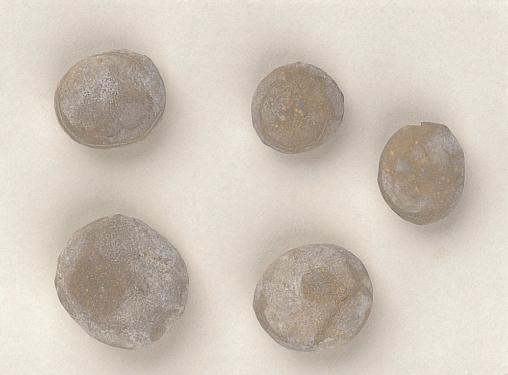- Dysuria is usually urinary tract infection-related, but it can be due to urethritis (e.g. chlamydia, herpes) or vaginitis (e.g. Trichomonas spp).
- Asymptomatic bacteriuria does not generally need treatment except in pregnancy.
- Pyelonephritis and renal abscesses are potentially life threatening.
- Acute pyelonephritis is suggested by fever, chills, flank pain, raised CRP (C-reactive protein) and white cell count.
- Kidney stones may vary from being asymptomatic, if tiny, to causing colicky loin (often radiating to groin) pain with visible haematuria. The pain may be so severe as to cause vomiting. The risk of infection and obstruction with such cases warrants urgent investigation.
- Kidney stones form in urine that is supersaturated with the chemical constituents. The main types are calcium oxalate, calcium phosphate struvite, urate and cystine.
- Calcium stones are exacerbated by loop diuretics, vitamin D, antacids and steroids, while uric acid stones can be exacerbated by salicylates and are more common in people of Middle Eastern and Mediterranean origin.
- With increased access to renal/abdominal ultrasound and CT scanning, more renal cysts and masses are being discovered incidentally. Any solid renal mass > 3 cm should be regarded as potentially malignant and considered for removal.
- Fertility declines with advancing chronic kidney disease (CKD), pregnancy being very unusual while on dialysis. Successful renal transplantation has a good chance of restoring fertility.
Urinary Tract Infections in Adults
Acute uncomplicated urinary tract infections (UTIs) are one of the most common medical conditions. Their incidence depends on gender, age, sexual activity and predisposing factors (e.g. urological, anatomical or functional abnormalities, pregnancy, foreign bodies, immunosuppression, host/mucosal immune defences). In sexually active younger women the incidence of cystitis is 0.5 per person per year, whereas in adult men aged less than 50 years it is 5–8 episodes per 10 000 men annually. Infections occur when uropathogens (e.g. Escherichia coli) present in rectal flora enter the urinary tract via the urethra. More rarely, UTIs occur by haematogenous spread.
Women with uncomplicated UTIs generally present with dysuria, frequency, urgency and suprapubic pain. Dysuria itself of course can be UTI-related, but can be due to urethritis (e.g. chlamydia, herpes) or vaginitis (Trichomonas spp).
In this setting E. coli is typically resistant to amoxicillin, and increasing resistance is now being seen to trimethoprim and cotrimoxazole. Trimethoprim is the best first-line option, but it is imperative to be aware of local communities’ antibiotic resistance patterns and local hospital/community guidelines. Three-day oral antibiotic courses are preferred (single-dose strategies are less effective, but have fewer side-effects). Recurrent episodes are usually due to incomplete eradication rather than reinfection. Women with recurrent cystitis can opt to try altering certain behavioural risk factors (e.g. voiding post-coitus, increasing fluid intake). Cranberry/lingonberry juice (> 200 mL/day) can help prevent some UTIs. Antibiotic prophylaxis either given regularly (e.g. 100 mg trimethoprim or cephalexin 250 mg nocte), or as a stat post-coital dose, might be a highly effective intervention. If given regularly, rotating the antibiotics every 6 to 12 weeks may reduce the risk of resistance.
Indwelling urinary catheters are the main reason for hospital acquired complex urinary tract infections. Such UTIs are the commonest cause of gram-negative bacteraemias.
Asymptomatic bacteriuria is defined as the presence of two separate clean-voided urine specimens with >105 bacteria/mL of voided urine without symptoms. Five per cent of premenopausal women, and far fewer men, have this. Over the age of 65, around 10% of men and 20% of women have asymptomatic bacteriuria. In pregnancy asymptomatic bacteriuria should be treated to avoid the risk of progression to acute pyelonephritis. Antibiotic sensitivity should be obtained first. Unless there is bacterial resistance, amoxicillin is now generally used first-line (or either nitrofurantoin or a cephalosporin such as cephalexin if penicillin-allergic). Nitrofurantoin should be avoided at term since it can cause anaemia in the newborn, and trimethoprim, being a folate antagonist, should particularly be avoided in the first trimester.
Aetiological agents are typically E. coli (75–90%) and S. saprophyticus (coagulase-negative staphylococcus; 10–20%). Proteus spp, Klebsiella spp and Enterobacter spp are also important, though much more rare.
Acute pyelonephritis is suggested by fever, chills, flank pain, raised C-reactive protein (CRP) and white cell count. Cystitis symptoms are present too. White cells in the urine are ubiquitous unless the infected kidney is also obstructed (e.g. ureteric stone). The kidney is inflamed and oedematous. Parenteral or oral therapy can be chosen, depending on the severity of the infection and other patient-related factors; most cases are dealt with by hospital admission. Fourteen-day courses of potent antibiotics are indicated (e.g. cefuroxime, ciprofloxacin).
Infections that have been caused by the presence of a foreign body, e.g. a urinary catheter, or a ureteric stent, may not improve, or may relapse very early, unless that foreign body is removed, or changed.
Renal abscess is a rare event, e.g. 1–10 per 10 000 hospital admissions. The clinical presentation can be fulminant or indolent. Abscesses can be corticomedullary, peri-renal or cortical (e.g. renal carbuncle in the renal cortex due to S. aureus). Papillary necrosis is also a rare event, caused by hypoxia in the renal medulla, whose risk factors include age, sickle cell disease or trait (and other haemoglobinopathies), diabetes, analgesic abuse and dehydration. Papillary necrosis can cause renal obstruction if the sloughed papillary nubbin lodges in the ureter. Emphysematous pyelonephritis is a rare, fulminant necrotizing variant of acute pyelonephritis, often in diabetic patients, and with gas-forming E. coli, K. pneumoniae, P. mirabilis; septic peri-nephric haematomata are a complication. Xanthogranulomatous pyelonephritis is an even rarer but severe chronic renal infection associated with urinary obstruction. A portion of renal parenchyma is replaced by a dense cellular infiltrate of lipid-laden macrophages; this process can extend outside the kidney. The offending organisms are usually E. coli or S. aureus.
Kidney Stones (Nephrolithiasis)
Here, we will discuss only kidney stones (as opposed to stones that form in the bladder or ureter). The main types of renal stone are calcium oxalate, calcium phosphate struvite, urate and cystine. Figures 6.1 and 6.2 shows some renal stones.
< div class='tao-gold-member'>









